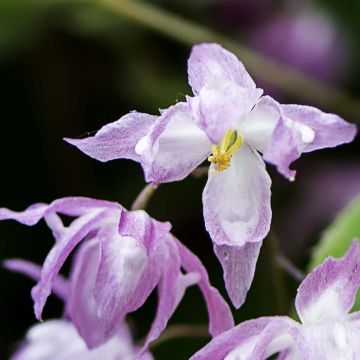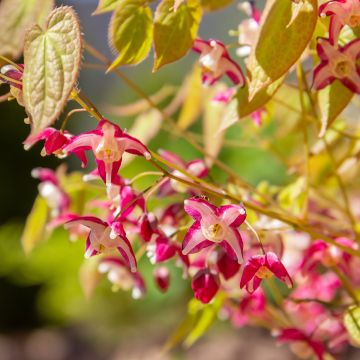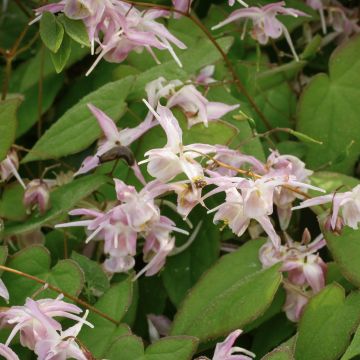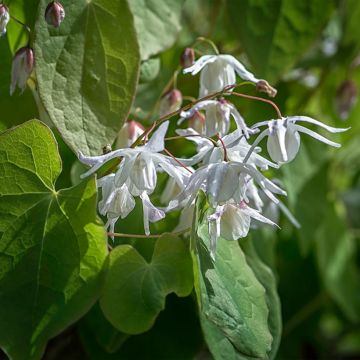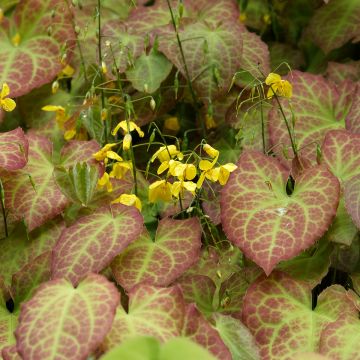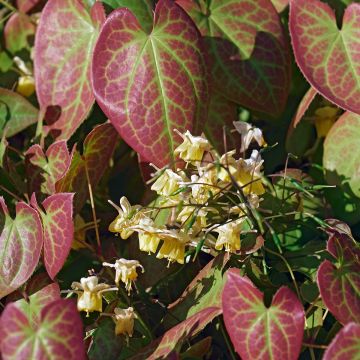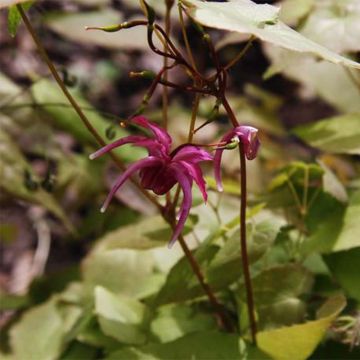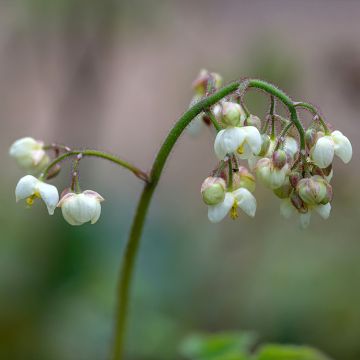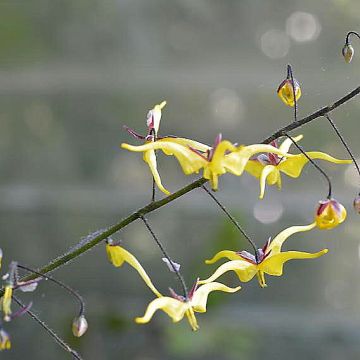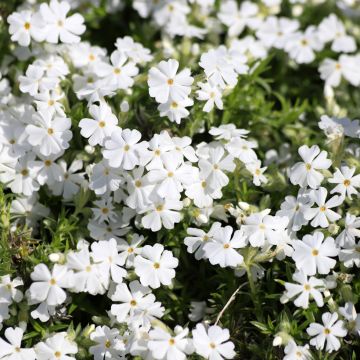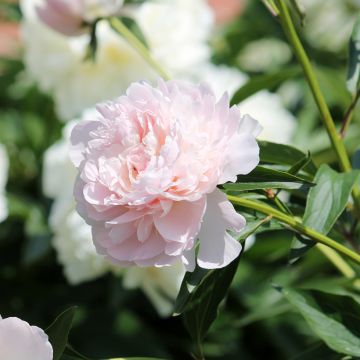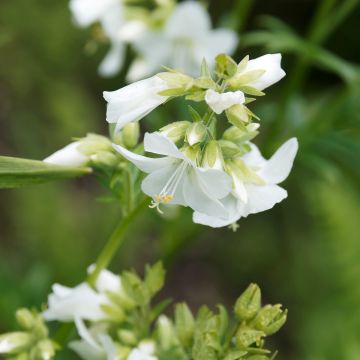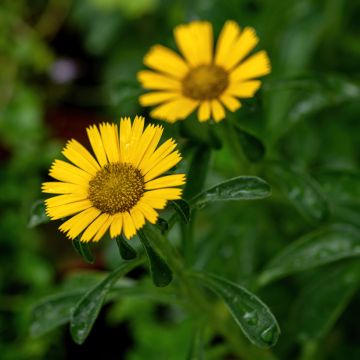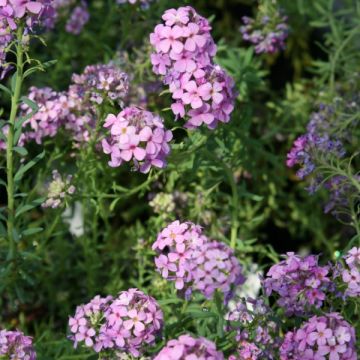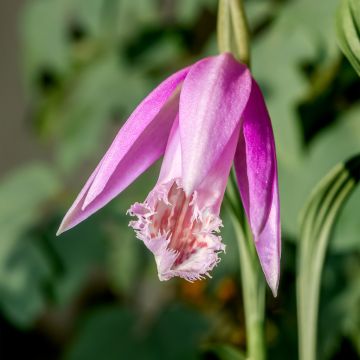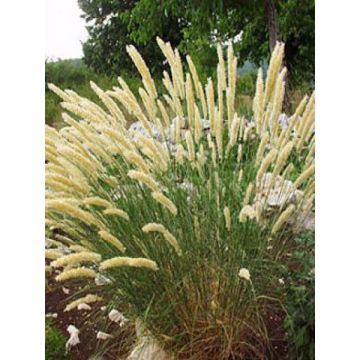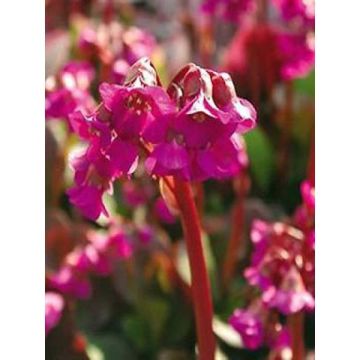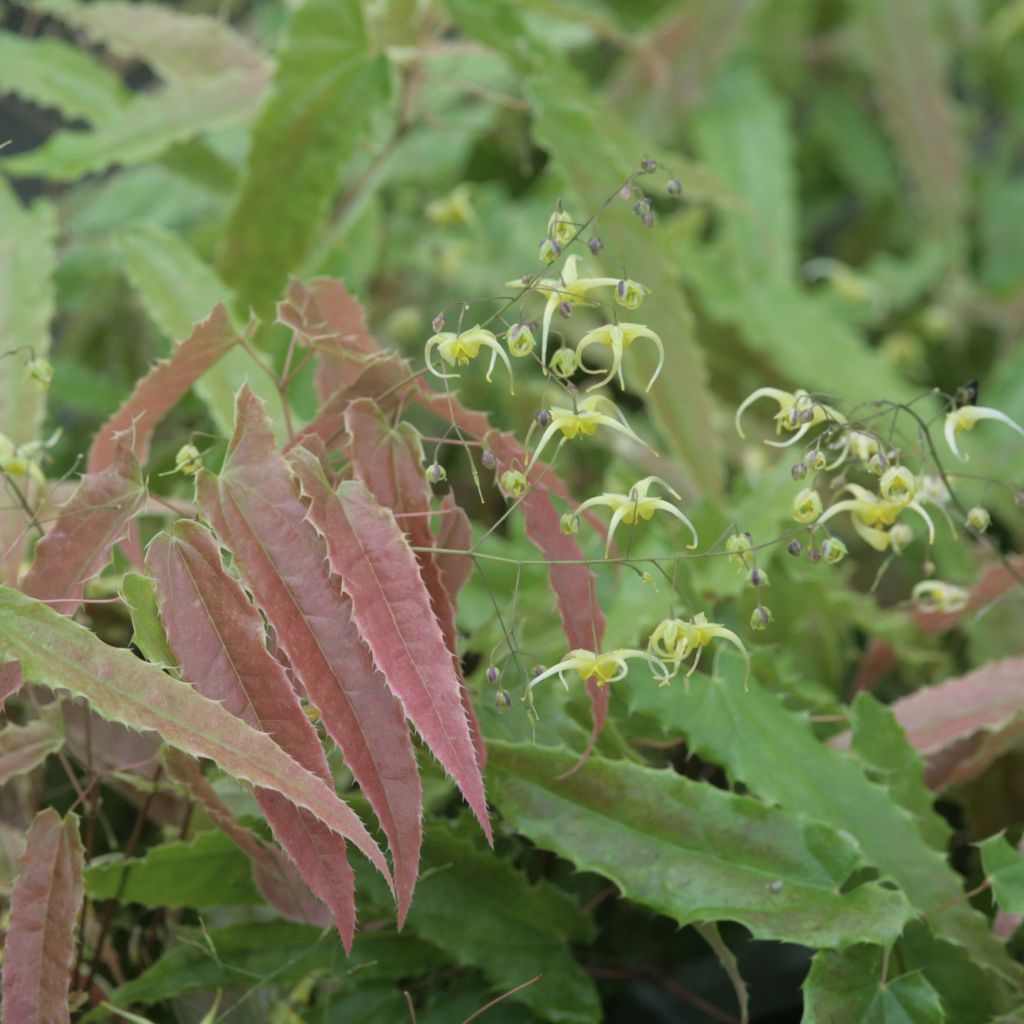

Epimedium Sphinx Twinkler - Barrenwort
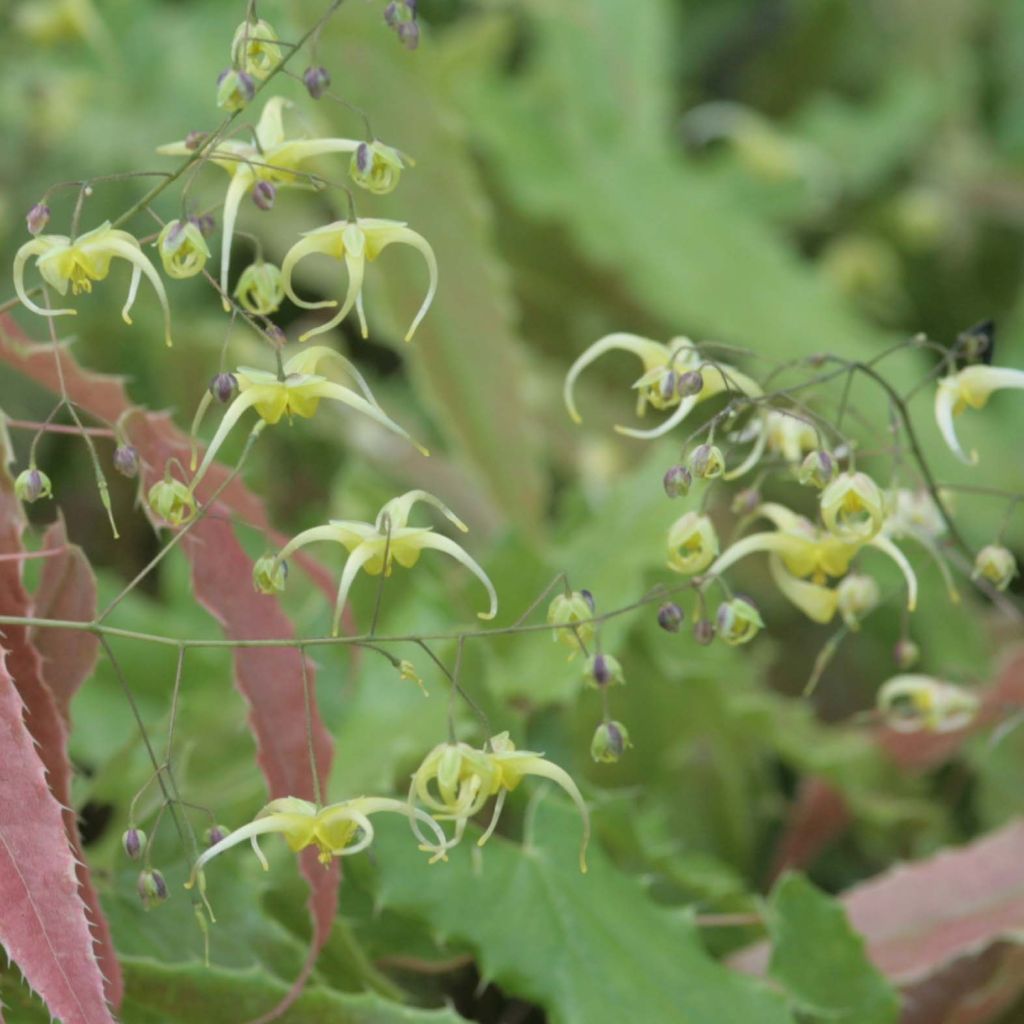

Epimedium Sphinx Twinkler - Barrenwort
Epimedium Sphinx Twinkler - Barrenwort
Epimedium Sphinx Twinkler
Barrenwort
This item cannot be shipped to the selected country
Delivery charge from €5.90
More information
Delivery charge from €5.90
More information
Schedule delivery date,
and select date in basket
This plant carries a 12 months recovery warranty
More information
We guarantee the quality of our plants for a full growing cycle, and will replace at our expense any plant that fails to recover under normal climatic and planting conditions.
From €5.90 for pickup delivery and €6.90 for home delivery
Express home delivery from €8.90.
Does this plant fit my garden?
Set up your Plantfit profile →
Description
The Epimedium 'Sphinx Twinkler' is a variety of Elf Flower, a charming rhizomatous perennial plant with semi-evergreen foliage that bears delicate sulfur yellow flowers in spring. Its spreading habit makes it a perfect ground cover for shade or partial shade.
Belonging to the berberidaceae family, the Epimedium 'Sphinx Twinkler' bears delicate small sulfur yellow flowers, very bright perched on slender stems in late spring (usually from April to May). It is from this elegance and delicacy that it gets its name "Elf Flower".
Its semi-evergreen foliage is composed of narrow, spiny leaflets, with a medium green color that turns a beautiful coppery shade in spring. Reaching a height of 35 cm (14in) with an equal spread, its loose tufted habit is spreading, making it a perfect ground cover for shade or partial shade. Its good cohabitation with roots also allows you to use it to dress the base of trees.
The Elf Flower thrives in cool conditions, ideally in a neutral pH soil (neither too acidic nor too alkaline) that is well-draining. As a plant of light woodland, it particularly appreciates humus-rich soil, so an annual compost application would be welcome. Once established, it can tolerate temporary drought. The Epimedium is hardy down to - 15°.
Easy to care for, its maintenance consists of removing the faded foliage from the previous year in late winter before the flowers appear. Some gardeners complain about its somewhat slow establishment, but your patience will be rewarded both by its vigor and its great longevity.
'Sphinx Twinkler' a perfect plant to cover and flower difficult areas such as shaded areas or tree bases. But it would be a shame to confine it to a utilitarian ground cover role: accompanied by Ferns, Hostas, Foxgloves and Candelabra Primroses, it will create a superb light shade border.
Epimedium Sphinx Twinkler - Barrenwort in pictures
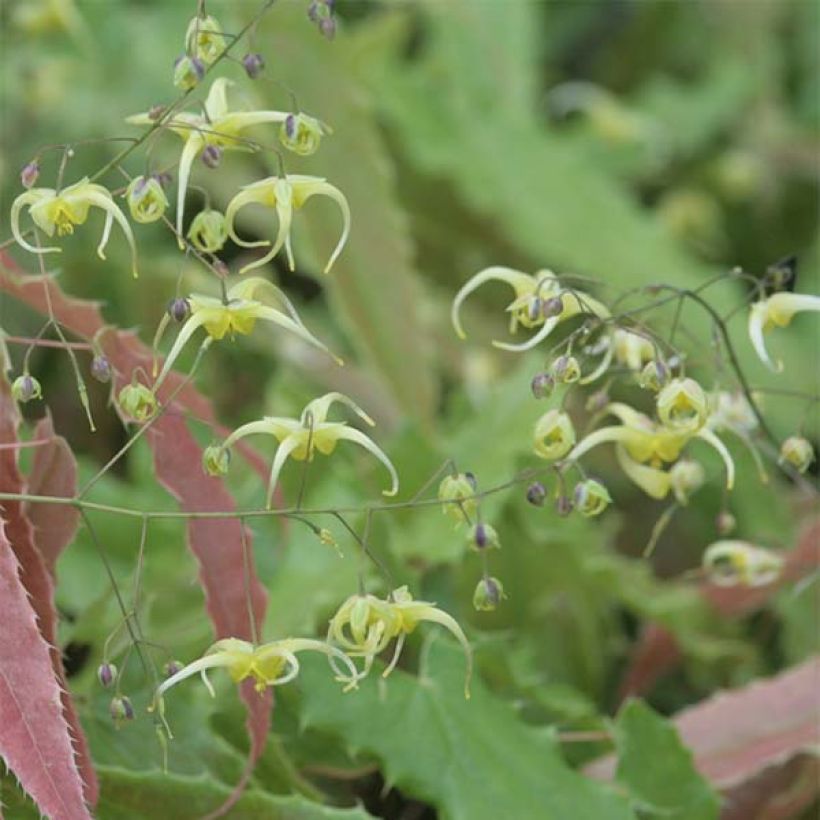

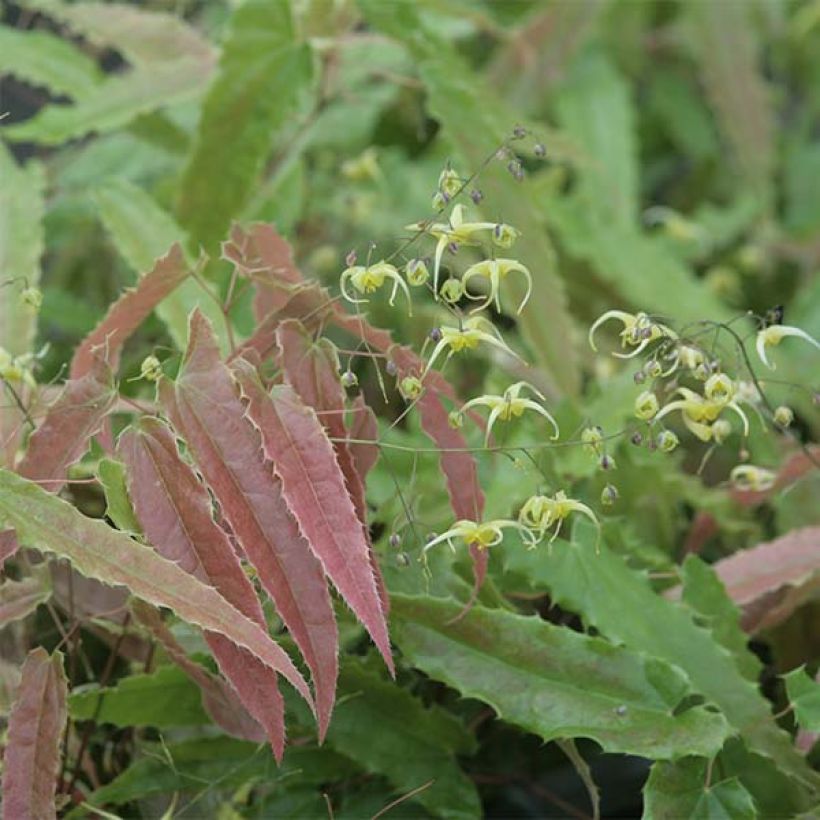

Flowering
Foliage
Plant habit
Botanical data
Epimedium
Sphinx Twinkler
Berberidaceae
Barrenwort
Cultivar or hybrid
Other Epimedium - Barrenwort
Planting and care
The 'Sphinx Twinkler' Epimedium thrives in a cool location, so you should plant it in shade or partial shade, ideally in soil with a neutral pH (not too acidic or too chalky) and well-drained.
As a plant of light understory, it particularly appreciates humus-rich soil, so an annual addition of compost will be welcome.
Once established, the Epimedium can tolerate temporary drought. Maintenance involves simply removing the faded foliage from the previous year at the end of winter before the flowers appear.
Planting period
Intended location
Care
Spring flowering perennials
Haven't found what you were looking for?
Hardiness is the lowest winter temperature a plant can endure without suffering serious damage or even dying. However, hardiness is affected by location (a sheltered area, such as a patio), protection (winter cover) and soil type (hardiness is improved by well-drained soil).

Photo Sharing Terms & Conditions
In order to encourage gardeners to interact and share their experiences, Promesse de fleurs offers various media enabling content to be uploaded onto its Site - in particular via the ‘Photo sharing’ module.
The User agrees to refrain from:
- Posting any content that is illegal, prejudicial, insulting, racist, inciteful to hatred, revisionist, contrary to public decency, that infringes on privacy or on the privacy rights of third parties, in particular the publicity rights of persons and goods, intellectual property rights, or the right to privacy.
- Submitting content on behalf of a third party;
- Impersonate the identity of a third party and/or publish any personal information about a third party;
In general, the User undertakes to refrain from any unethical behaviour.
All Content (in particular text, comments, files, images, photos, videos, creative works, etc.), which may be subject to property or intellectual property rights, image or other private rights, shall remain the property of the User, subject to the limited rights granted by the terms of the licence granted by Promesse de fleurs as stated below. Users are at liberty to publish or not to publish such Content on the Site, notably via the ‘Photo Sharing’ facility, and accept that this Content shall be made public and freely accessible, notably on the Internet.
Users further acknowledge, undertake to have ,and guarantee that they hold all necessary rights and permissions to publish such material on the Site, in particular with regard to the legislation in force pertaining to any privacy, property, intellectual property, image, or contractual rights, or rights of any other nature. By publishing such Content on the Site, Users acknowledge accepting full liability as publishers of the Content within the meaning of the law, and grant Promesse de fleurs, free of charge, an inclusive, worldwide licence for the said Content for the entire duration of its publication, including all reproduction, representation, up/downloading, displaying, performing, transmission, and storage rights.
Users also grant permission for their name to be linked to the Content and accept that this link may not always be made available.
By engaging in posting material, Users consent to their Content becoming automatically accessible on the Internet, in particular on other sites and/or blogs and/or web pages of the Promesse de fleurs site, including in particular social pages and the Promesse de fleurs catalogue.
Users may secure the removal of entrusted content free of charge by issuing a simple request via our contact form.

































